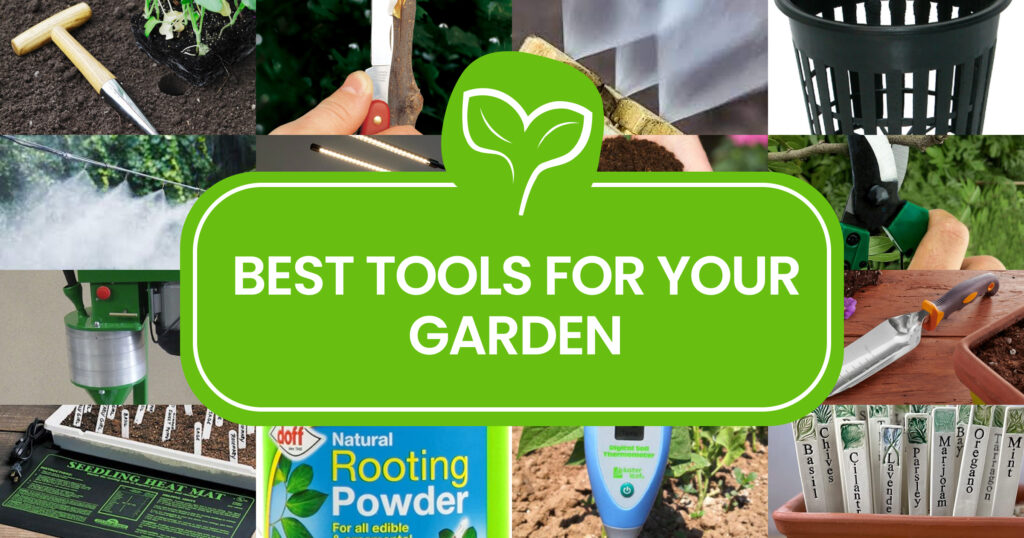
Whether you’re a seasoned green thumb or just starting out on your gardening journey, having the right tools can make all the difference in successfully propagating and nurturing your plants. In this article, we will explore a range of essential gardening tools specifically geared toward plant propagation, sharing valuable insights and tips that come from firsthand experience.
There’s something truly magical about witnessing the growth and development of new plants from seeds, cuttings, or grafts. However, to embark on this journey of creating life, you’ll need the right plant propagation equipment. These tools will not only assist you in the propagation process but also help you establish a thriving garden filled with healthy, robust plants.
You’ll learn about pruning shears, rooting hormone, seed starting trays, heat mats, grow lights, mist systems, potting soil, grafting knives, labels and markers, seed scarifiers, dibbers, mist nozzles, propagation domes, net pots, trowels, and soil thermometers.
By the end of this article, you’ll be equipped with the knowledge and understanding to select the right tools for your needs and embark on successful propagation projects. Let’s sow the seeds of knowledge and watch your garden flourish!
Cutting and Pruning Tools
When it comes to plant propagation, precision is key, and that’s where cutting and pruning tools come into play. These trusty companions will assist you in taking cuttings, making clean and accurate cuts, and ensuring the overall health and vitality of your plants.
Pruning shears

One indispensable tool in your arsenal (and not just for pruning Crepe Myrtles) is a pair of pruning shears. These handheld wonders are a lot sharper than scissors and are designed to cleanly trim branches, stems, and foliage. Of course, there are different types for different jobs:
- Bypass pruning shears (also called Secateurs) are my go-to choice for trimming live wood in the garden. These shears resemble scissors, with blades that pass through each other, allowing for clean cuts and effortless usage.
- Anvil pruning shears are the way to go when it comes to damaged or dead branches. With blades located on one side and an anvil on the other, they work similarly to a knife on a chopping board, making them less suitable for live wood but ideal for those tougher branches.
- Anvil ratchet pruning shears are best for tackling thicker branches. This tool allows for step-by-step pruning, making it significantly easier to cut through thicker branches.
Selecting pruning shears with durable, high-quality construction and a comfortable grip allows for effortless cutting and enhances overall pruning efficiency. I would suggest going for titanium-coated blades because those strike the best balance between sharpness and durability.
3 most durable Pruning shears:
- Hydrofarm HGPL400CT Precision Curved Lightweight Titanium Pruner
- Gonicc 8″ Professional Premium Titanium Bypass Pruning Shears
- ClassicPRO Titanium Bypass Pruning Shears
Grafting knives
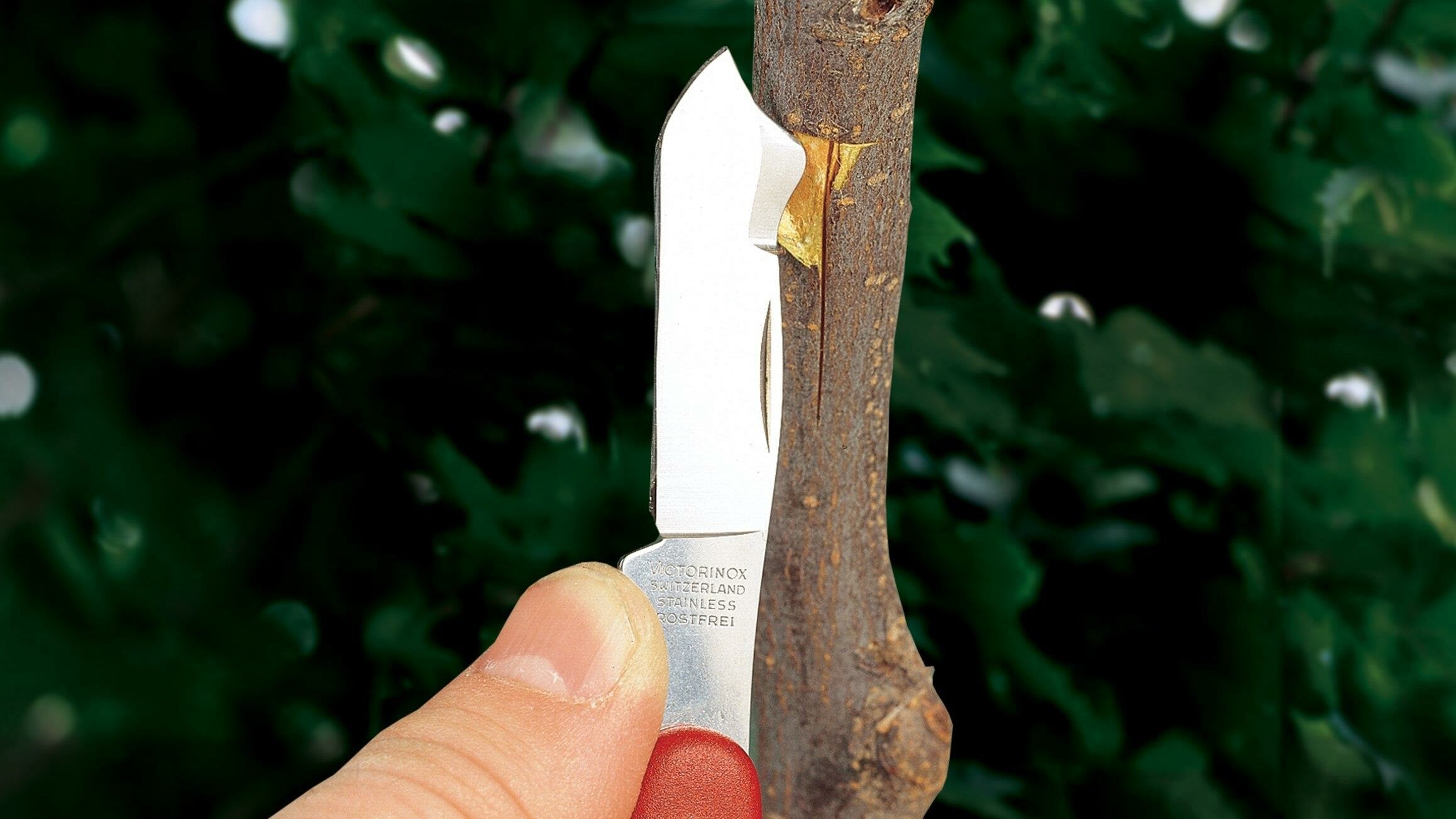
Now, let’s talk about grafting knives. Grafting opens up a world of possibilities for propagating plants and creating unique combinations of different varieties. A grafting knife is specially designed to make precise cuts, enabling you to join two plant parts together seamlessly. The sharp blade and ergonomic handle of a grafting knife give you the control and precision needed to achieve successful grafts. The grafting blade is designed with a straight edge that includes a sharpened bark lifter on its top edge. In contrast, the pruning knife is fashioned in the traditional parrot beak style.
Having tried several myself, I’ve found that opting for a sturdy, high-quality blade made of Sandvik steel with a sharp edge and a comfortable handle makes all the difference in achieving precise cuts and enjoyable grafting experiences in my garden. Also, take these into consideration if you are left-handed or right-handed. The easiest way to decide is see in which hand do you hold a knife and in what direction you cut with it:
- If you prefer holding the knife in your right hand and pulling it towards yourself, then a right-handed knife would be the suitable choice.
- If you prefer holding the knife with your right hand and cutting away from yourself, then a left-handed knife would be the appropriate option for you.
3 most durable Grafting knives:
Seed Starting Tools
It’s a rewarding and cost-effective way to grow a diverse array of plants in your garden from seeds. To set your seeds off to a strong start, you’ll need the right seed-starting tools. These essentials will create the ideal conditions for germination and ensure your seedlings develop into healthy, robust plants.
Starting trays
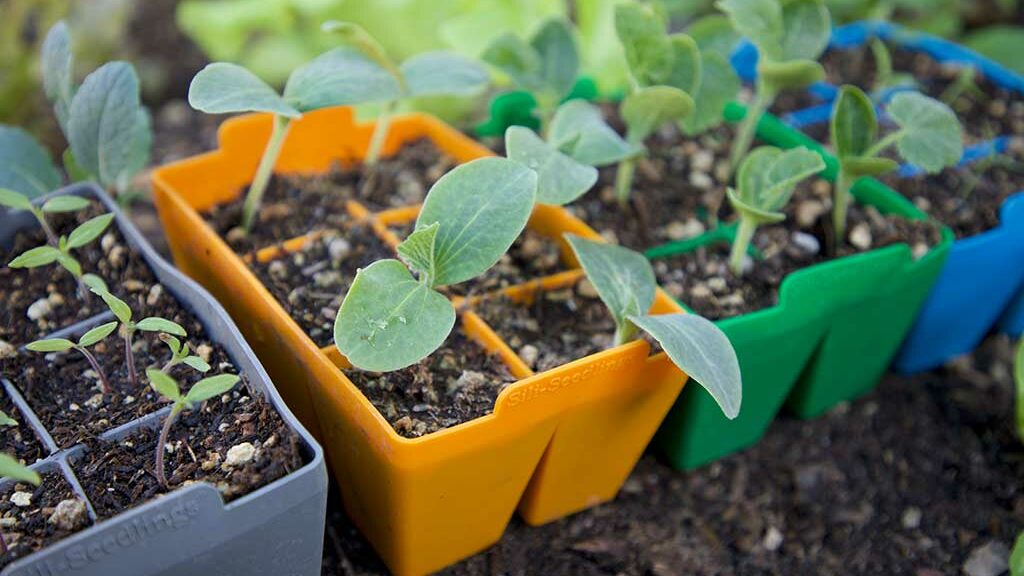
These nifty containers provide a convenient and organized space for your seeds to germinate and grow. Look for trays with individual cells that allow each seedling to have its own space. This promotes healthy root development and prevents the tangling of delicate young roots. Seed-starting trays also make it easier to transplant seedlings later on without disturbing their roots.
When it comes to selecting the perfect starting trays for your garden, there are a few other factors to consider.
- First, ensure that the trays are of appropriate depth, typically around 2 to 3 inches. This allows for sufficient space for the seeds to germinate and establish healthy root systems.
- Next, opt for trays with drainage holes to prevent waterlogging and promote proper aeration.
- Additionally, choose trays made of durable materials like plastic or biodegradable options that provide insulation and retain moisture.
- Finally, consider the size of the trays, ensuring they fit comfortably in your designated growing area.
Best value starting trays:
- MIXC 10 Packs Seed Starter Tray Seed Starter Kit
- 6-Pack 240 Cells Seed Starter Tray Kit with Humidity Dome
- Sfee 5 Pack Seed Starter Tray Kit, 60 Cells Seedling Starter Trays
Heat Mats
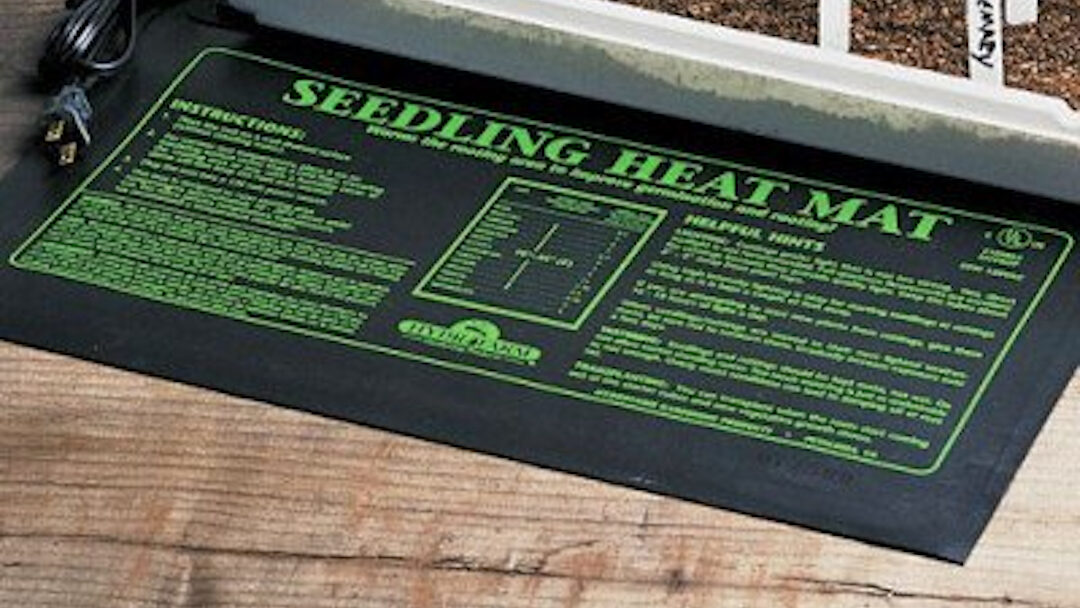
Now, imagine providing your seeds with a warm and cozy environment that encourages quick and vigorous germination. That’s where heat mats come in. These specialized mats radiate gentle warmth, mimicking the ideal soil temperature for germination. They are just perfect for Tomatoes or Zucchinies. By placing your seed trays on these mats, you can significantly enhance germination rates and speed up the overall growth process.
- When selecting a heat mat, consider the size of your garden and the number of plants you wish to nurture. It’s important to choose a mat that fits your available space while providing enough room for your plants to thrive.
- When it comes to mat thickness, a good range is typically around 1/16 to 1/8 inch, striking a balance between durability and flexibility.
- As for how long to keep the heat mat on, it varies depending on the specific plant species. Research the ideal germination temperature and duration for your plants to ensure they receive the right amount of heat without overheating.
Now, are heat mats worth it? In my experience, absolutely! They offer controlled warmth, promote faster germination, and can help you extend your growing season, making them a valuable investment for any gardener.
Best value Heat Mats for your plants:
- VIVOSUN 10″x20.75″ Seedling Heat Mat
- AC Infinity SUNCORE S3, Waterproof Seedling Mat
- BN-LINK Durable Seedling Heat Mat
Grow Lights
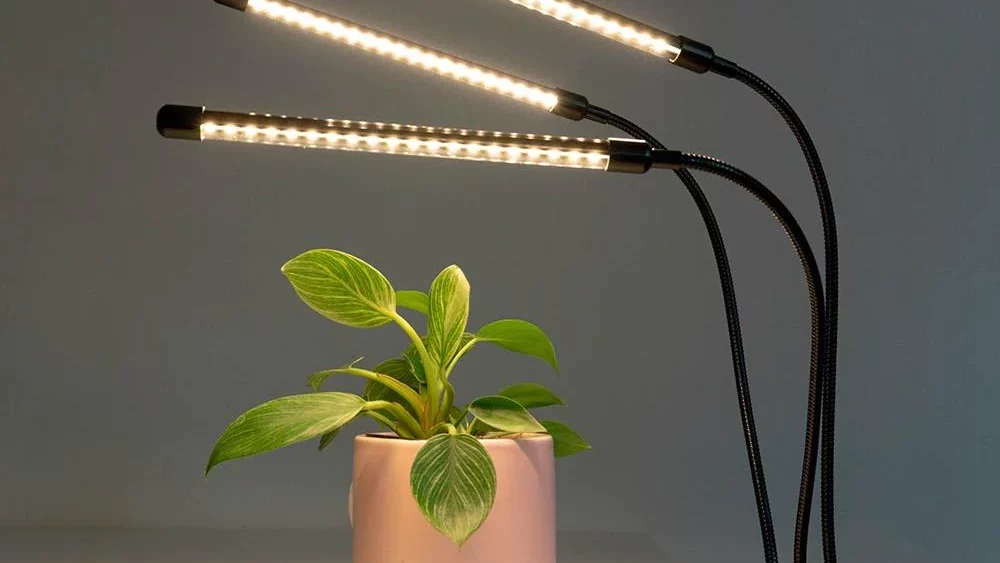
To give your seedlings the light they need to flourish, consider investing in grow lights. Especially if you’re like me and usually start seeds indoors or in low-light environments, grow lights are saviors, because they provide the necessary spectrum of light to support healthy photosynthesis and strong seedling growth. Whether you choose fluorescent, LED, or other types of grow lights, they offer a reliable source of artificial sunshine for your young plants.
When it comes to choosing the best type of grow light for indoor plants, there are some things to consider.
- LED grow lights are highly popular due to their energy efficiency, but I mostly prefer them because of their customizable spectrums, and longevity. They provide a full spectrum of light that closely mimics natural sunlight, promoting healthy plant growth.
- As for wattage, it depends on the size and light requirements of your plants. Generally, for small to medium-sized indoor plants, a range of 20-40 watts is sufficient, while larger plants may require 40-60 watts or more.
- When it comes to lumens, plants typically require a minimum of 2000-3000 lumens per square foot for optimal growth.
Keep in mind that different plant species may have varying light requirements, so it’s beneficial to research the specific needs of your plants. By considering these factors, you can select the perfect grow lights to nurture your indoor plants and watch them thrive year-round.
Top Grow Lights for your plants:
Propagation Aids and Equipment
These tools are designed to provide optimal conditions for successful root development, encourage healthy growth, and simplify the propagation process.
Rooting Hormone
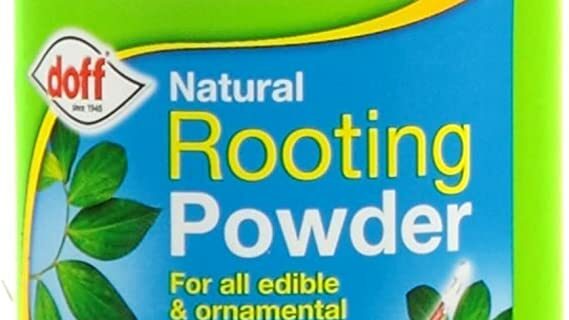
One tool that has proven its worth time and time again is the rooting hormone. This magical substance contains growth-promoting hormones that stimulate the formation of roots in cuttings, giving them a better chance of survival and establishing themselves as independent plants. You can use them for basically every plant you want to propagate (Okras, Mangos, Pickle plants, etc.) By dipping the cut end of your stem or cutting into rooting hormone before planting, you give it a nice little boost in its quest for root development. I have a much higher success rate of propagating anything if I don’t forget using rooting hormone. Yes, it happens to the best of us too…
When selecting a rooting hormone, consider whether you prefer a powdered, gel, or liquid form.
Each has its advantages, with powders being cost-effective and long-lasting, gels providing better adhesion, and liquids offering ease of use.
Look for a rooting hormone that contains a high concentration of auxins, such as indole-3-butyric acid (IBA), as this promotes robust root development. Additionally, consider the shelf life and expiration date of the product to ensure its effectiveness.
Most effective Rooting Hormone products:
- JRM CHEMICAL JCD02ER E-Z Rooting Compound
- Clonex Hydrodynamics Rooting Gel
- SUPERthrive VI30179 Plant Vitamin Solution
Mist System
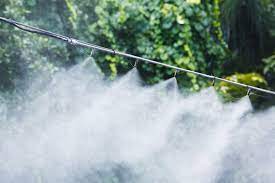
Another essential tool in the propagation arsenal is a proper mist system. This ingenious device helps maintain the ideal moisture levels required for successful propagation. By emitting a fine mist of water at regular intervals, mist systems provide a humid environment that keeps cuttings hydrated and promotes root growth. They’re particularly beneficial in preventing drying out and wilting during the delicate early stages of propagation.
When it comes to mist systems, the cost can vary depending on the complexity and size of the setup. Basic misting systems can start around $50, while more advanced or custom-built systems can range into hundreds of dollars.
As for water usage, mist systems are designed to provide a fine mist, consuming significantly less water compared to traditional watering methods.
While they can help create a more humid environment, they may not necessarily keep flies away entirely. However, a well-designed system that maintains proper humidity levels can discourage certain pests.
The lifespan of a mist system largely depends on its quality and maintenance. With proper care and regular upkeep, a high-quality misting system can last for several years.
Finally, it’s important to note that modern mist systems (although, not all) typically require electricity to operate the pump that generates the mist. Ensure you have access to a power source or consider solar-powered options if electricity availability is a concern.
Great Value Mist Systems:
- CozyCabin Outdoor Misting Cooling System with Pump
- Landgarden Outdoor Misting Cooling System
- MIXC 1/4-inch Mist Irrigation Kits Accessories Plant Watering System
Propagation Dome
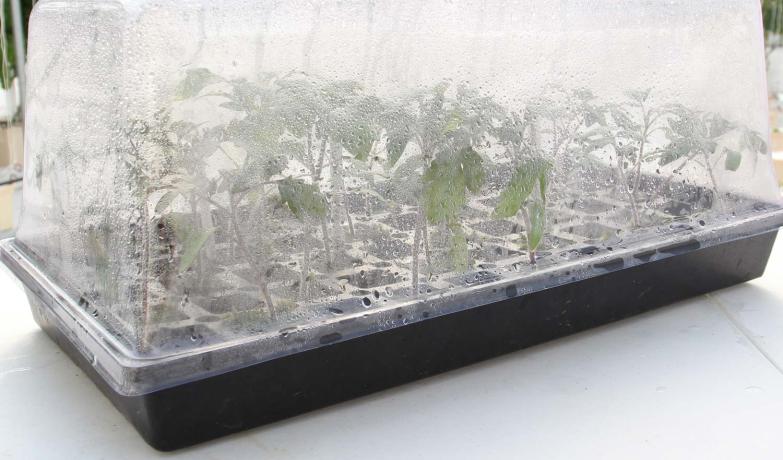
Propagation domes are transparent covers that fit snugly over seed starting trays or individual pots, enclosing your plants in a controlled and sheltered space. By creating a greenhouse-like environment, they help retain moisture, maintain consistent humidity levels, and provide a stable temperature for optimal germination and early growth.
The increased humidity and stable conditions created by the dome have significantly improved germination rates and overall growth for me. They’ve become an essential tool in my propagation toolkit, providing a safe haven for my plants.
When selecting a propagation dome, consider the quality of materials, ventilation options, and the ability to adjust humidity levels.
Most effective Propagation Domes:
- AC Infinity Humidity Dome
- EarlyGrow 93807 Domed Propagator
- Yield Lab 7 Inch Propagation & Humidity Vented Domes
You are going to need these as well
Potting Soil
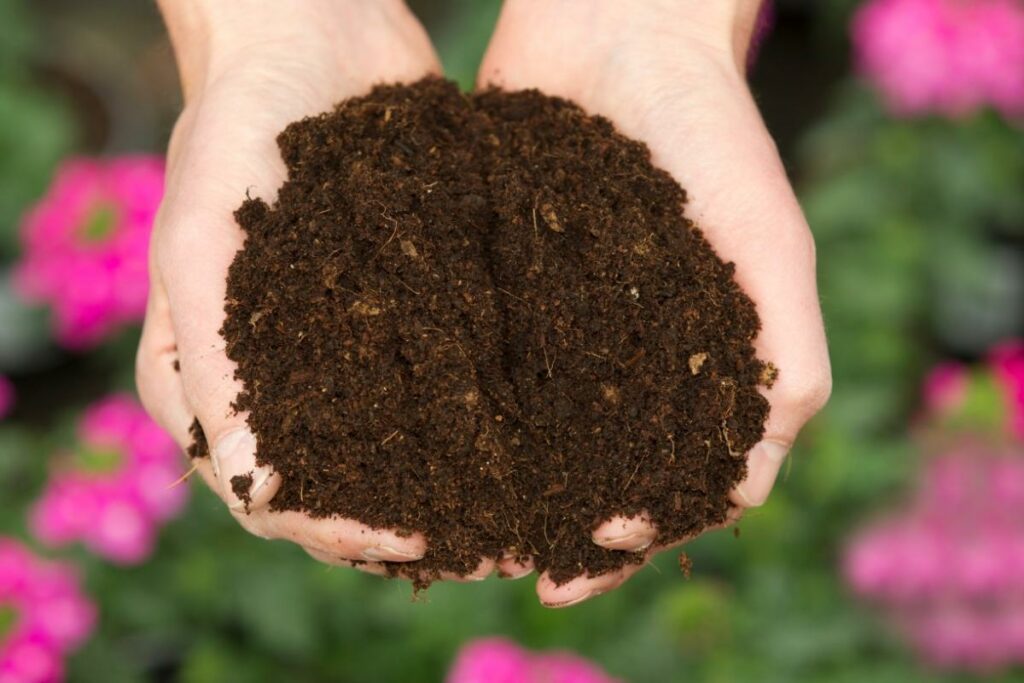
First on our list is the potting soil. While it may not be a tool per se, it is a critical component for successful plant propagation. High-quality potting soil provides the necessary nutrients, proper drainage, and adequate aeration for your cuttings or seedlings to thrive. Choose a well-balanced mix that suits the specific needs of your plants and supports healthy root development.
It’s essential to understand the difference between potting mix and potting soil. Potting mix usually contains a blend of organic matter, such as peat moss, vermiculite, or perlite, along with other additives like compost or fertilizers. Potting soil, on the other hand, typically consists of natural soil mixed with organic materials to enhance its structure and drainage.
When it comes to choosing the best potting soil, it depends on the specific needs of your plants. Look for a well-draining mix that retains moisture while allowing roots to breathe. Additionally, consider the type of plants you’re propagating and their specific requirements, such as acidity or nutrient levels.
While potting soil is primarily designed for use in containers, it can also be used in garden beds. However, it’s important to note that potting soil may lack certain characteristics found in regular soil, such as the presence of beneficial microorganisms or natural drainage properties. To compensate, you can amend potting soil with organic matter to improve its performance in garden beds.
Remember that potting soil serves as a suitable medium for plant propagation due to its lightweight nature and enhanced nutrient availability. By choosing a quality potting soil that aligns with the needs of your plants, you can provide an ideal foundation for their growth, whether in pots or garden beds.
Great quality Potting Soils:
- Perlite 1 Qt & 9 Packs Potting Soil
- Sphagnum Moss Potting Mix Soil 2 QT and Orchid Potting Mix
- VegTrug 8 Pocket Herb Garden and Espoma Organic Potting Soil Mix
Markers and Labels
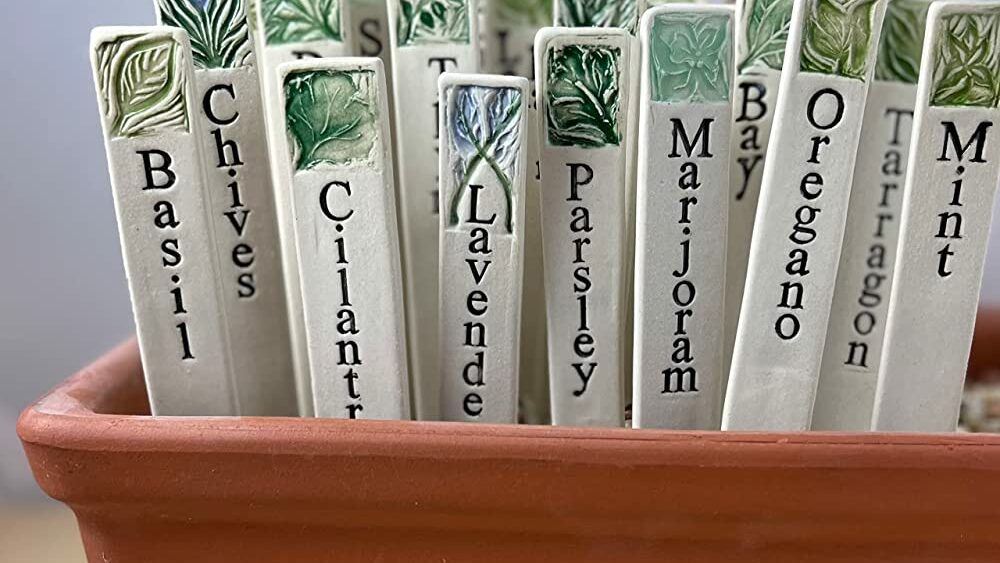
Yep, you read it right. Keeping track of your plants during propagation is essential for organization and identification. Labels and markers allow you to assign names, dates, and other relevant information to your cuttings or seedlings. This way, you’ll be able to monitor their progress and identify different plant varieties with ease.
Now, let’s talk about the different types of plant labels.
- Wooden labels are a traditional choice, but they have their drawbacks. They tend to absorb moisture, causing the writing to bleed and the labels to rot quickly.
- Plastic labels, although commonly used, have their limitations too. They can easily get lost or buried, become brittle, and break, and also the writing often fades by the end of the season.
- To ensure long-lasting, reusable labels, I’ve found aluminum labels to be an excellent solution. They are easy to emboss with a simple ballpoint pen, making them perfect for trees and long-lived plants in the garden.
Most durable labels for your garden:
- 12 Piece Variety Pack Laser Cut Metal Seed & Plant Markers
- 30 Pack Wooden Garden Plant Markers
- Huray Rayho Wooden Plant Labels
Net Pots
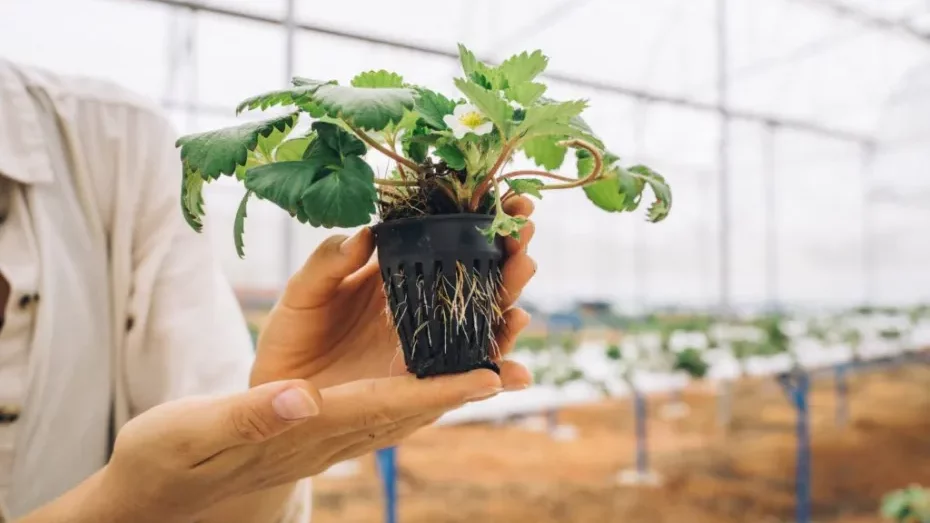
These specialized pots have open sides, allowing roots to grow through and be exposed to air and nutrients. Net pots are commonly used in hydroponic systems or aquatic plant propagation, as they provide excellent aeration and drainage for the roots, leading to healthier and stronger plants.
Choosing the right net pot size is crucial for successful plant growth. They are available in various sizes, ranging from 2 to 6 inches in diameter, and selecting the correct size is essential. Smaller net pots work well for small plants and leafy greens, while larger ones are suitable for bigger and heavier plants like peppers and squash.
Don’t make the mistake I made in the beginning and keep in mind that net pots only support the plant’s base or root ball, with the roots coming out the sides. When picking net pots, look for the ones with a well-defined lip to prevent them from falling through as the plant grows.
3 best value Net Pots for your garden:
- 40-Pack – 2 Inch 3 Inch Net Cups
- 72 Sets Rockwool Cubes and Net Pots
- 6 in. Wide Lip Bucket Basket (Pack of 6)
Trowel
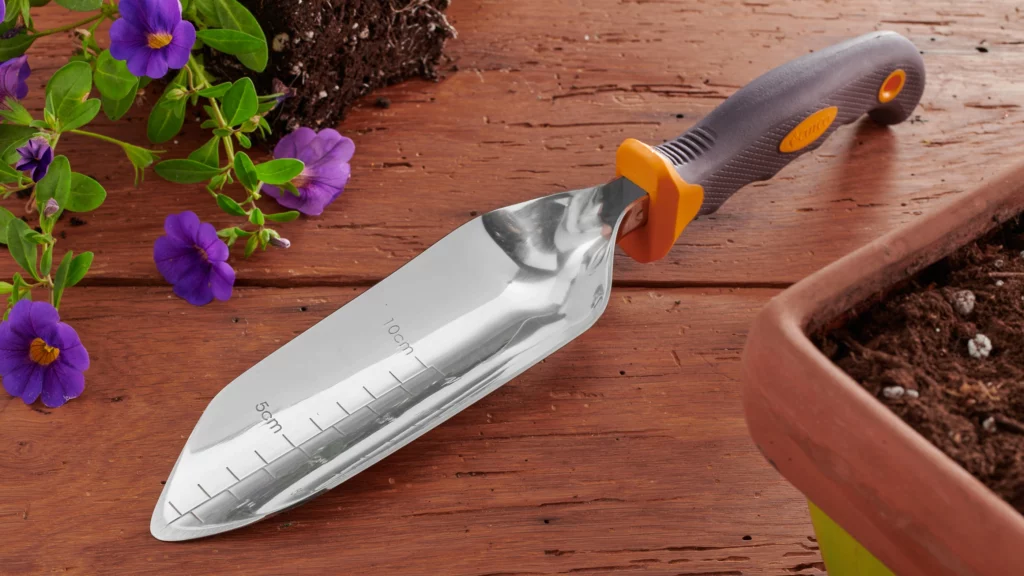
This small handheld tool is invaluable for transplanting your propagated plants into larger pots or garden beds. With its pointed tip and sturdy construction, the trowel makes it easy to dig and create holes, ensuring the smooth and successful transition of your plants from their propagation environment to their permanent home.
When it comes to choosing your garden trowel, I would suggest always going for stainless steel versions. Those are the ones that can be your trusty companion for decades because anything else tends to bend, rust, or simply just break. Trust me, I bought a lot of trowels just because they looked cool, but they ended up in the bin after a year or two.
Of course, not even the sturdiest stainless steel trowel will survive for long if you don’t take care of it, so make that a habit after each usage. I usually just hose it down, sanitize it with bleach and wipe it thoroughly with a dry rag.
Durable Garden Trowels for you:
- Garden Weasel 91362 Oversized Potter’s Scoop Garden Trowel
- Sioner Garden Hand Trowel
- Roamwild Multi-Digger Dual Grip Garden Hand Trowel
Seed Scarifier
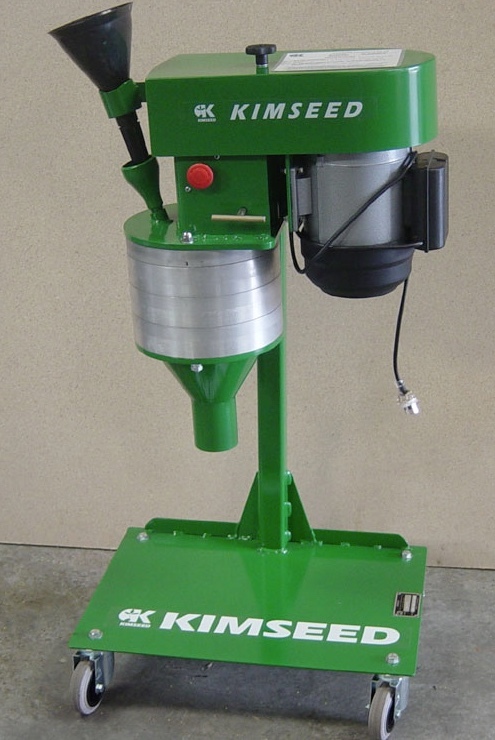
Seeds with hard outer shells or thick coatings often benefit from scarification, a process that involves mechanically breaking, scratching, or softening the seed coat. A seed scarifier is designed to make this task easier and more efficient, allowing water and nutrients to penetrate the seed, kick-starting the germination process.
When choosing a seed scarifier for your garden, there are several factors to consider.
- Type: Firstly, look for a seed scarifier that is suitable for the type of seeds you plan to scarify. Different seeds have varying degrees of hardness, so ensure that the scarifier you choose is capable of effectively breaking through the seed coat. My first seeds scarifier buying project was a bust because of this and I ended up using sandpaper – which you can also do, of course…
- Size & Capacity: If you have a large quantity of seeds to scarify, a model with a higher capacity will be more efficient. Additionally, check if the scarifier is adjustable, allowing you to customize the depth and intensity of scarification according to the specific seed requirements.
- Durability: This is very important, as you want a scarifier that will withstand repeated use. Look for one made from sturdy materials that can handle the rigors of scarifying seeds without breaking or wearing down quickly. A price should be a good indicator if you are not sure.
- Price: Compare prices, read customer reviews, and choose a scarifier that offers good value for your money while also receiving positive feedback from other users. The good ones usually start around $800 – $1000.
Most durable Seed Scarifiers:
Dibber
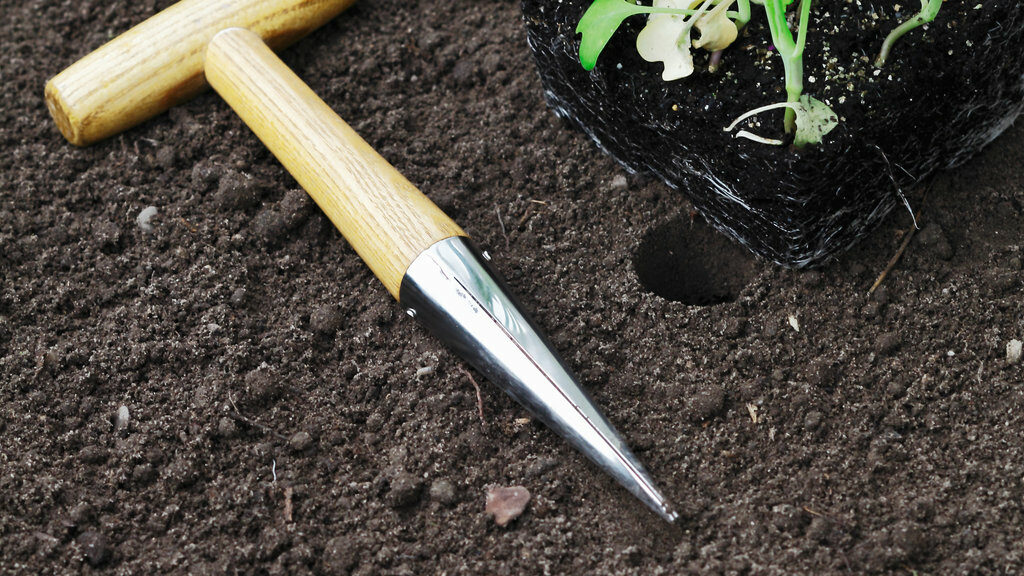
A dibber, another handy tool, helps create evenly spaced holes in your seed starting trays or garden beds for planting seeds or transplanting seedlings. With its pointed end, the dibber allows you to make holes in the soil, ensuring proper depth and spacing for your plants. It is particularly useful when working with delicate or small seeds that require careful placement.
When it comes to choosing a dibber for your gardening needs, there are a few things to consider. Dibbers come in various shapes and sizes, allowing you to find one that suits your preferences. You can choose from
- hand dibbers: useful for planting small seedlings and bulbs
- long-handled dibbers: ideal tool if you are like me, and don’t want to bend down too much
- multi-dibbers: used to create multiple holes with one poke
- plant dibbers: smallest ones that are about the size of a pen
If you plan on using the dibber mainly for transplanting seedlings, it’s important to select one with the right characteristics. Look for a dibber with a rounded tip and a slight taper, as this will make it easier to create holes for your seedlings. Avoid dibbers that are too narrow or too tapered, as they may not be as effective for this purpose.
Consider the thickness of your dibber as well. It should approximately match the diameter of your seedling plugs.
Great value dibbers for you:
Mist Nozzle
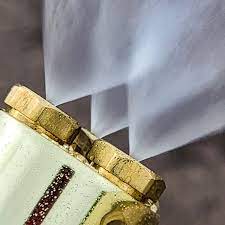
For those utilizing mist systems, a proper mist nozzle can be a game-changer. These specialized nozzles disperse a fine mist of water, providing adequate moisture to your cuttings or seedlings. With adjustable settings, you can control the intensity and coverage of the mist, creating the perfect environment for successful propagation.
You don’t want to make the mistake of buying the first product that you come across in your local store, so when choosing a mist nozzle for your garden, there are a few important factors to consider.
- Spray Pattern: Different mist nozzles produce different spray patterns, such as fine mist, cone-shaped spray, or fan spray. Consider the specific needs of your plants and the area you want to cover to choose a mist nozzle with the appropriate spray pattern.
- Flow Rate: The flow rate of the mist nozzle determines how much water is emitted per minute. It’s essential to select a mist nozzle with a flow rate that matches your watering requirements. Too high of a flow rate may lead to excessive water consumption, while too low of a flow rate may not provide enough moisture.
- Adjustable Settings: Opt for a mist nozzle that offers adjustable settings, allowing you to control the water flow and spray intensity. This versatility enables you to adapt the misting to different plants or weather conditions.
- Durability: Look for mist nozzles made from high-quality materials, such as brass or stainless steel, as they are more durable and resistant to corrosion. This ensures the nozzle will withstand outdoor conditions and provide long-lasting performance.
- Compatibility: Check the compatibility of the mist nozzle with your existing watering system. Ensure it can be easily attached to your garden hose, irrigation system, or misting setup without any compatibility issues.
- Ease of Cleaning: Consider a mist nozzle that is easy to clean and maintain. Nozzles with removable parts or self-cleaning features can save you time and effort in keeping them free from clogs or mineral deposits.
Best value Mist Nozzles:
- RuoFeng Mister Nozzles Brass
- Brass Misting Nozzle, 10 Pack High Pressure Spray Misting Nozzle
- RESNSTAR Misting Nozzles
Soil Thermometer
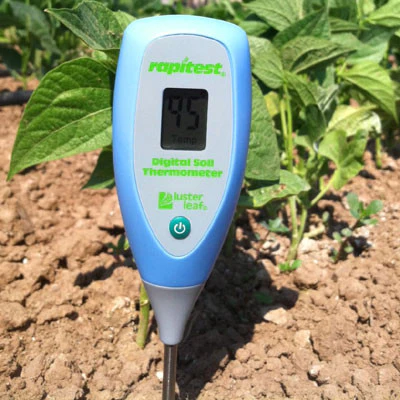
To monitor the temperature of your soil, a soil thermometer comes in handy. This tool allows you to gauge the temperature at the root level, ensuring optimal conditions for seed germination and root growth. By regularly checking the soil temperature, you can make necessary adjustments to maintain an ideal environment for your plants.
Speaking from experience, investing in a quality soil thermometer is more cost-effective than buying new plants. Golden rule: Look for a thermometer with a durable protective cover that ensures its longevity. It should be made of high-quality, water-resistant materials to withstand various conditions.
You can go analog or digital. If you are not dead set on old analog thermometers, the digital ones can give you a lot more data: such as accurate and speedy readings of soil moisture, acidity, and pH. They feature LCD screens that you can easily read even in the dark. It might not sound as a big deal, but trust me, it is better to have one than need one.
When choosing your thermometer, also take the probe length you need into consideration. Usually, the tip of these are about 5 cm long, but you might need one that goes deeper.
Great value thermometers:
To Sum it Up
it’s evident that the right tools can make a world of difference in our gardening endeavors. They simplify the process, increase success rates, and provide us with the means to transform cuttings and seeds into thriving, vibrant plants.
So, whether you’re a seasoned gardener looking to expand your propagation skills or a beginner eager to dive into the world of plant propagation, armed with this knowledge of essential tools, you’re well-equipped for success.
The main takeaway is every time you want to buy a tool for your garden, make your choice based on these key aspects:
- Quality: Always prioritize quality when choosing gardening tools. Look for well-made, durable tools that are designed to withstand the demands of gardening. Quality tools are not only more effective and efficient but also last longer, saving you money in the long run.
- Functionality: Consider the specific needs of your garden and choose tools that fulfill those requirements. Each tool should serve a purpose and be suitable for the tasks you frequently perform. For example, if you have a large garden, investing in long-handled tools can help you reach farther and reduce strain on your back.
- Ergonomics: Gardening can be physically demanding, so it’s crucial to prioritize ergonomics when selecting tools. Look for tools with comfortable handles that provide a good grip and minimize strain on your hands and wrists. Tools that are lightweight and well-balanced will also reduce fatigue during extended use.
Remember, propagation is not only a means to multiply our favorite plants but also a source of joy, connection, and creativity. It allows us to witness the miracle of life unfolding before our eyes and enables us to share the beauty of nature with others.
